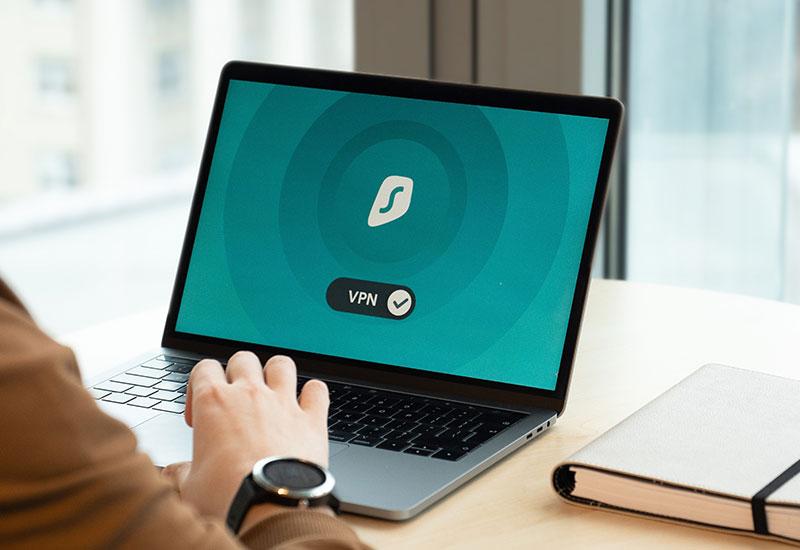How Do You Report Special Needs Child Social Security Fraud? The Process Explained

Start Building Your
Child’s Credit
Child identity theft doesn’t affect everyone equally. Special needs children are particularly vulnerable because Supplemental Security Income (SSI) and Social Security Disability Insurance (SSDI) programs can be exploited by malicious parties.
If this has happened to your child, the first question you might ask is, “How do you report special needs child Social Security fraud?”
The good news is that there are several authorities you can turn to for help. This guide will outline your options and show you how to prevent fraud from having life-changing consequences. You’ll also learn about the best way to protect your child’s personal information through monitoring services.
How Does Social Security Child Benefit Fraud Occur?
Social Security fraud affecting special needs children often has the same vector as scams targeting non-special needs children—Social Security number (SSN) theft. The main difference lies in the way the perpetrator uses the number.
If the target is a child with no special needs, the SSN is commonly used to steal their identity and scam financial institutions through fraudulent loans. With special needs children, the fraudster’s goal is usually to obtain benefits offered by SSI and SSDI programs.
There are two ways such crime can happen:
- The fraudster files for unclaimed disability benefits using stolen information
- The child’s SSA-appointed payee uses the funds for their own gain
Criminals can get ahold of a child’s information in numerous ways, most notably:
- Theft of physical documents
- Medical data leaks
- Extraction of information through manipulative tactics
Depending on the specifics and consequences of the fraud, there are several ways to report and remediate it.
How To Report Child Social Security Fraud

Fraud claims are handled by the SSA, specifically the Office of the Inspector General (OIG). You can submit a report online or use the following methods if you wish to stay anonymous:
- Phone—1-800-269-0271 (TTY 1-866-501-2101)
- Fax—1-410-597-0118
- Mail—Social Security Fraud Hotline, P.O. Box 17785, Baltimore, MD 21235-7785
The OIG will investigate the claim and involve other prosecuting authorities as needed. Social Security fraud is a serious crime that carries penalties of up to $250,000 and imprisonment for up to five years, and the SSA takes all reports seriously.
This is especially the case if the fraud involves a person of trust (e.g., SSA employees or doctors), who may face much stricter punishments, including prison time of up to ten years.
Make sure to provide as many details as possible when submitting a report, including the following:
- When and where the fraud took place
- Details on the person(s) involved
- The motive behind the fraud (if known)
This way, the SSA can investigate the issue more efficiently and resolve the fraud before it does too much harm. They may even let you change the child’s SSN if the scam involves identity theft. In this case, you should also reach out to another authority—the Federal Trade Commission (FTC).
Reporting Fraud to the FTC
If someone steals your child’s SSN, they can use it for various purposes besides disability fraud, such as credit or tax fraud. The SSA doesn’t handle such cases, so they recommend contacting the FTC.
You can report the fraud on the FTC’s website, but note that doing so won’t lead to resolution because individual cases aren’t handled through this channel. Instead, you need to submit a report using the FTC’s dedicated identity theft portal.
When you do, you’ll get a recovery plan and can create an account that the FTC will use to guide you through the remediation process.
Tips for Preventing Social Security Fraud and Identity Theft

If your child has fallen victim to fraud, you should do everything in your power to prevent it from happening again once you’ve resolved the most pressing concerns. To safeguard your child’s identity and information, follow these steps:
- Take advantage of the SSA’s security measures
- Protect your child’s medical records and other important documents
- Sign up for an identity protection service
Add SSA’s Security Blocks to the Child’s Account
The SSA offers two protection services you don’t get by default—you need to contact your local office and request them. The following table explains how each service helps:
| Service | How It Works |
| eServices block | Prevents everyone (including you and your child) from making any changes to the child’s personal information online. The block is active indefinitely until you remove it by contacting your local SSA office |
| Direct Deposit Fraud Prevention Block | Ensures nobody can change the child’s direct deposit information or enroll in direct deposits. Any future change will require the removal of the block, regardless of whether you want to make a change through the SSA or a relevant financial institution |
These services can prevent some of the main tactics fraudsters use to obtain or manipulate a child’s information. They don’t provide comprehensive protection because there are still ways for someone to steal it, so use these services in conjunction with other safety measures.
Keep Your Child’s Documents Safe

While you can’t prevent data breaches aimed at your child’s healthcare institutions, you should do your part to ensure medical records don’t fall into the wrong hands. Keep close track of providers to which you’ve given any sensitive information, and verify any request for private data.
The same goes for other documents containing your child’s personally identifiable information (PII). Keep them in a safe place at home, and make sure your child lets you know if anyone asks about their personal details.
Consider Activating an Identity Protection Service
It’s natural to feel like you can’t handle fraud prevention single-handedly—taking care of your child carries more than enough responsibilities, even without such a complex task. If you need a helping hand, identity monitoring and protection services can be a worthy investment.
These services take care of all the work you’d otherwise have to do alone, such as the following:
- Staying on high alert for signs of identity theft
- Monitoring your child’s private information
- Investigating issues and reporting them to the relevant authorities
There are various ID protection providers to explore, but many share the same issue—cumbersome monthly fees. To fix this, Austin Capital Bank created a budget-friendly solution that gives you the peace of mind you need—FreeKick.
Never Fall Victim to Identity Theft With FreeKick
With a child’s identity being stolen every 30 seconds, this crime is more common than you might think—and it’s important to take every precaution you can. That’s where FreeKick by Austin Capital Bank comes in—it’s a two-in-one platform that protects your family’s identities and helps build credit for your children.
How FreeKick Protects Identity
FreeKick offers multiple identity protection features for both adults and minors. For you and your adult children, FreeKick offers the following services:
- Credit profile monitoring
- SSN monitoring
- Dark web monitoring for personal information
- Up to $1 million identity theft insurance
- Full-service white-glove concierge credit restoration
- Lost wallet protection
- Court records monitoring
- Change of address monitoring
- Non-credit (Payday) loan monitoring
- Free FICO® Score monthly
- FICO® Score factors
- Experian credit report monthly
For minor children, FreeKick offers:
- Credit profile monitoring
- Social Security number (SSN) monitoring
- Dark web monitoring for children’s personal information
- Up to $1 million identity theft insurance
- Full-service white-glove concierge credit restoration
- Sex offender monitoring—based on sponsor parent’s address
How FreeKick Builds Credit
Once you’ve secured your family’s identities, it’s time to think about their financial future.
With FreeKick’s credit building service, which is available for children aged 13 to 25, you can give your child up to five years of credit history once they turn 18. This will help them save $200,000 during their lifetimes by giving them access to more favorable loan terms and other financial perks.
You have to take three steps:
- Create an Account—Go to FreeKick.bank, sign up for an account, and choose a deposit amount you’re comfortable with
- Set It and Forget It—FreeKick will automatically start building 12 months’ worth of credit history for your children
- Keep Growing—After 12 months, you can close the account without any fees or continue building credit for your family for another year
FreeKick Pricing
FreeKick offers flexible pricing. There are two plans you can choose from:
| FDIC-Insured Deposit | Annual Fee |
| $3,000 | $0 (Free) |
| No deposit | $149 |
Each plan offers:
- Credit building for six children aged 13 to 25
- Identity protection for two parents and six children aged 0 to 25
Protect your family from identity theft and financial hardship—sign up for FreeKick today.